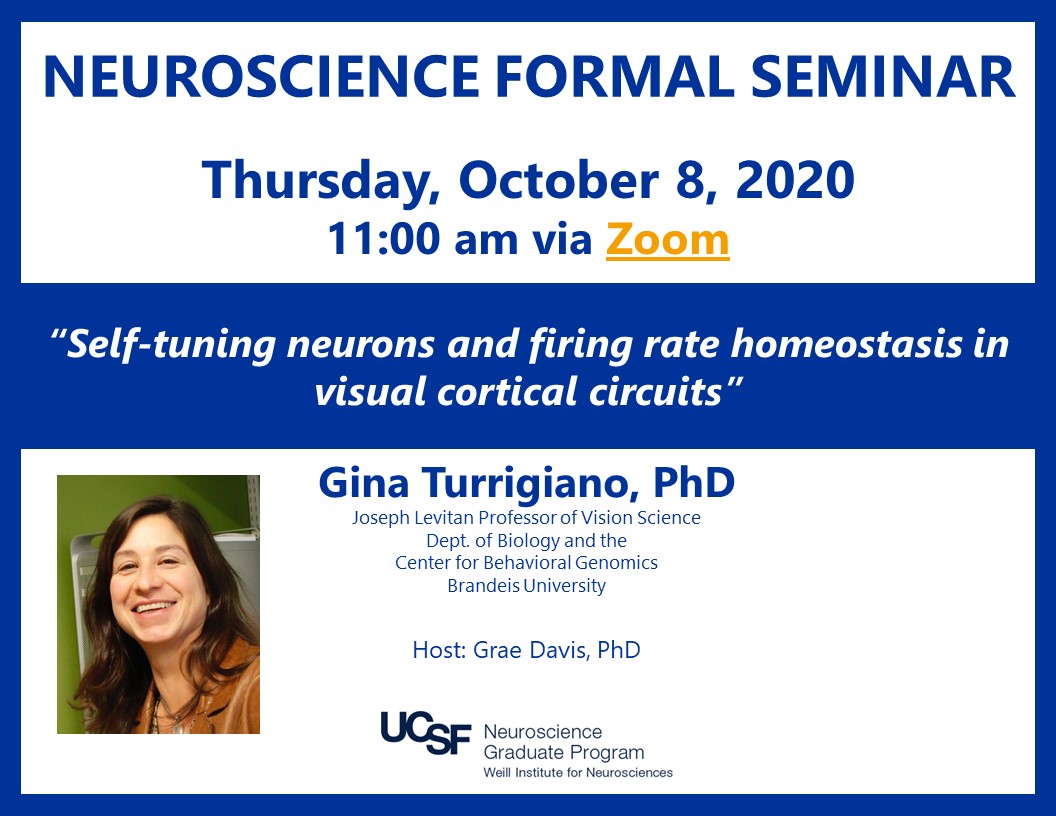
Abstract: Neocortical networks must generate and maintain stable activity patterns despite perturbations induced by learning and experience- dependent plasticity. There is abundant theoretical and experimental evidence that network stability is achieved through homeostatic plasticity mechanisms that adjust synaptic and neuronal properties to stabilize some measure of average activity, and this process has been extensively studied in primary visual cortex (V1), where chronic visual deprivation induces an initial drop in activity and ensemble average firing rates (FRs), but over time activity is restored to baseline despite continued deprivation. Here I discuss recent work from the lab in which we followed this FR homeostasis in individual V1 neurons in freely behaving animals during a prolonged visual deprivation/eye-reopening paradigm. We find that - when FRs are perturbed by manipulating sensory experience - over time they return precisely to a cell-autonomous set-point. Finally, we find that homeostatic plasticity is perturbed in a mouse model of Autism spectrum disorder, and this results in a breakdown of FRH within V1. These data suggest that loss of homeostatic plasticity is one primary cause of excitation/inhibition imbalances in ASD models. Together these studies illuminate the role of stabilizing plasticity mechanisms in the ability of neocortical circuits to recover robust function following challenges to their excitability.
